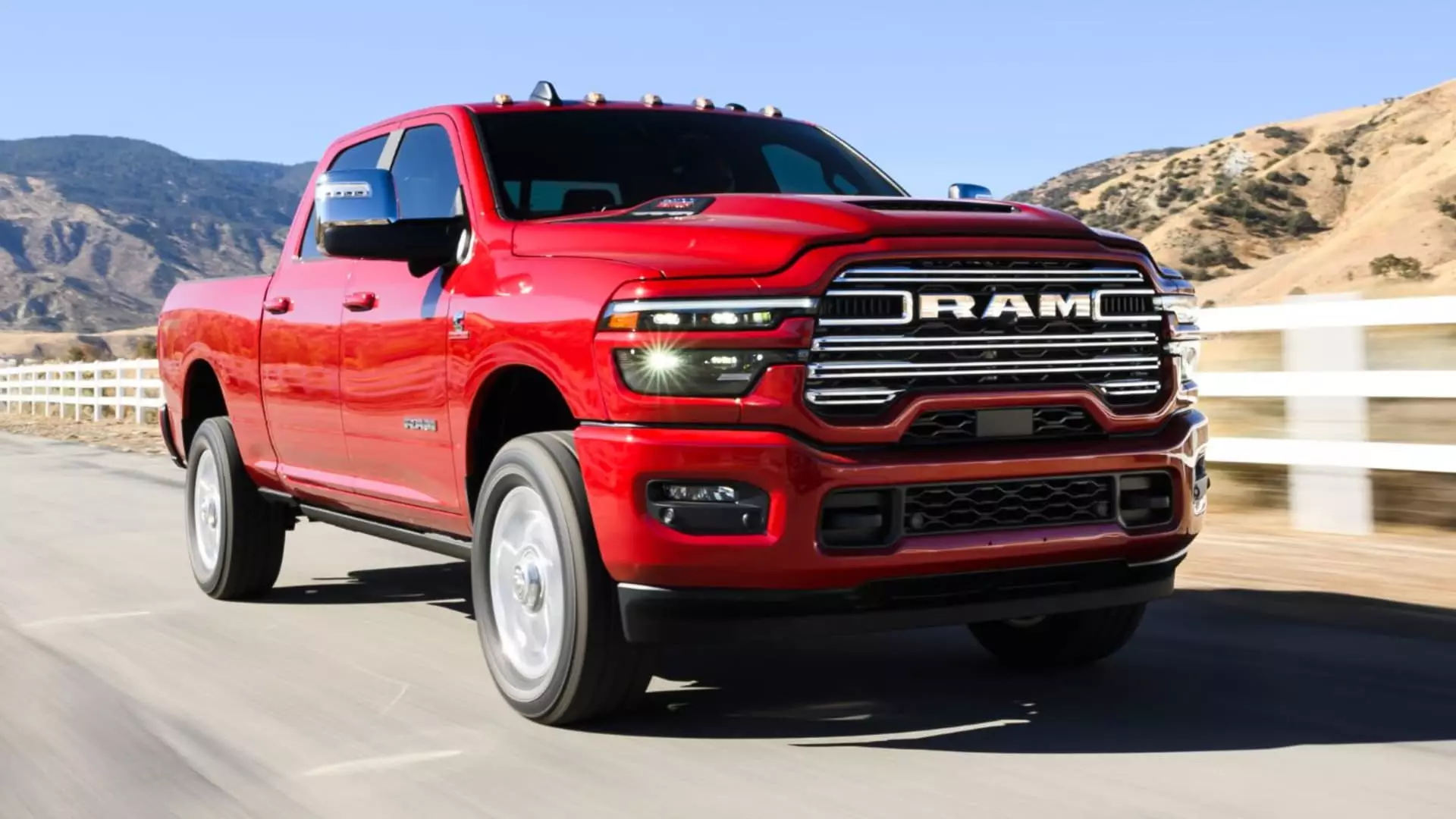Stellantis is making significant strides to rejuvenate its Ram heavy-duty truck lineup as it faces a declining sales trend that has persisted for three years. The automotive industry is notoriously cyclical, and Ram’s recent struggles highlight the challenges faced by American manufacturers in an increasingly competitive market. According to industry reports, Ram experienced a troubling 19% drop in year-over-year sales, contributing to the pressure on the brand to innovate and re-attract a loyal customer base.
The newly redesigned Ram 2500 and 3500 trucks have received comprehensive updates in both aesthetics and performance. These trucks are now powered by a new 6.7-liter Cummins turbo diesel engine, a game-changer that boasts 430 horsepower and an impressive 1,075 foot-pounds of torque. Such figures place the Ram heavy-duty trucks at the forefront of power, appealing particularly to the customer segment focused on towing and hauling capabilities. Furthermore, Ram has not overlooked the appearance of its vehicles. The refreshed interiors and exteriors cater to both function and style, designed to attract buyers in a market where first impressions matter.
As part of their strategy, Stellantis plans to roll out these revamped models to U.S. dealerships in the first quarter of the year, setting the base price at approximately $47,560—a $2,300 increase compared to previous iterations. The timing of this launch is crucial, especially following the delay in releasing the Ram 1500 model last year. Ram’s CEO, Tim Kuniskis, acknowledged the challenges in getting the 1500 model fully operational and expressed hope that the tweaks in scheduling would yield better outcomes going forward.
Ram’s struggles come in stark contrast to competitors like Ford and General Motors, which reported stable sales for their pickup models. The stark differences in performance among these brands underline the critical importance of customer loyalty and brand positioning. While Kuniskis candidly stated, “We’ve been getting our ass kicked,” it underscores an urgent need for Ram to refine its strategies and perhaps rethink its marketing approach. The pickup truck segment heavily depends on function as well as brand perception, so making sure their message resonates with customers could be a turning point.
The Ram Heavy Duty lineup is extensive, featuring various models such as the Tradesman, Big Horn/Lone Star, and Limited Longhorn, catering to a range of consumer preferences. The addition of both diesel and gasoline engine options—like the 6.4-liter Hemi V-8—provides flexibility to potential buyers. As Stellantis pivots to adapt to market demands, the true test will lie in sales figures in the coming months, which will reflect whether these updates are enough to revitalize the brand. The commitment to highlighting their American manufacturing roots, particularly with trucks built in Saltillo, Mexico, could also play a role in forging customer loyalty amidst rapidly evolving market dynamics.
While the road ahead is fraught with challenges, Stellantis is poised to capitalize on its recent investments in the Ram heavy-duty truck lineup. If successful, they may not only begin to reverse their sales declines but also reclaim their reputation as a top contender in the competitive truck market.

